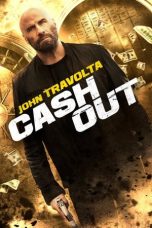- Source: I-League
The I-League is the men's second professional association football division of the Indian football league system behind the Indian Super League. Administered by the All India Football Federation, it is currently contested by 12 clubs. It operates as a system of promotion and relegation with the Indian Super League (ISL) and the I-League 2.
The competition was founded in 2007 as the successor to the National Football League, with the first season starting in November 2007. The league was launched as India's first top-tier professional football league with the aim to increase the player pool for the India national team. I-League operates on a system of promotion and relegation with the I-League 2 and at first only promotion system with the ISL, from the 2022–23 season.
Since the inception of the I-League, a total of ten clubs have been crowned champions. Dempo have won the most titles in league history, being crowned champions three times. Churchill Brothers, Mohun Bagan, Bengaluru and Gokulam Kerala have won the league twice. Salgaocar, Aizawl, Minerva Punjab, Chennai City, Roundglass Punjab and Mohammedan have won it once.
History
= Origins
=In 1996, the first domestic league was started in India, known as the National Football League, in an effort to introduce professionalism in Indian football. Despite that ambition, that has not been achieved to this date. During the National Football League days, the league suffered from poor infrastructure and unprofessionalism from its clubs. One of the clubs in the league, FC Kochin, went defunct in 2002 after it was revealed that the club had not paid salaries since 2000, after making up 2.5 crores of losses in a season.
After a decade of decline with the National Football League, the All India Football Federation decided it was time for a change. This resulted in the modern day iteration of the top-tier in India.
= Formation
=After the 2006–07 NFL season, it was announced that it would be rebranded as the I-League for the 2007–08 season. The league's first season consisted of eight teams from the previous NFL campaign and two teams from the 2nd Division to form a 10 team league. Oil and Natural Gas Corporation (ONGC), the title sponsors of the previous NFL, were named as the title sponsors of the I-League before the league kicked off in November 2007. The league also announced a change in their foreign-player restrictions with the new rule being that all the clubs could sign four foreigners – three non-Asian and one which must be Asian. The league also announced that, for the first season, matches will be broadcast on Zee Sports.
The original ten clubs in the I-League's first season were Air India, Churchill Brothers, Dempo, East Bengal, JCT, Mahindra United, Mohun Bagan, Salgaocar, Sporting Goa and Viva Kerala.
= The early seasons (2007–2012)
=The first I-League match took place on 24 November 2007 between Dempo and Salgaocar. The match, which took place at the Fatorda Stadium in Margao, ended 3–0 in favour of Dempo with Chidi Edeh scoring the first goal in league history in the third minute. After eighteen rounds it was Dempo who came out as the first champions in the I-League. Viva Kerala and Salgaocar, however, ended up as the first two teams to ever be relegated from the I-League.
The next season the I-League was expanded from 10 to 12 teams. Mumbai, Chirag United, Mohammedan, and Vasco were all promoted from the I-League 2 to make the expansion possible. This however brought up early concerns over how "national" the I-League was. The 2008–09 season would see eleven of the twelve teams come from three different cities. The previous season saw all ten teams come from four different cities. Bhaichung Bhutia, then captain of the India national team, said that it was the federations job to spread the game across the country and that it needed to happen.
Regardless of the early criticism, the I-League went on as scheduled and once the 2008–09 season concluded. it was Churchill Brothers who came out on top. Then, before the 2009–10 season, the league was once again expanded from 12 teams to 14. In order to make this happen Salgaocar, Viva Kerala, Pune, and Shillong Lajong were all promoted from the 2nd Division to the I-League. This helped the I-League retain some criticism about how national the league was as now the league would be played in seven different cities/states: Goa, Kerala, Kolkata, Mumbai, Pune, Punjab, and Shillong.
After the 2009–10 season it was Dempo who came out on top for the second time in I-League history.
Conflict of parties
On 9 December 2010 the All India Football Federation signed a 15-year, 700-crore deal with Reliance Industries and International Management Group of the United States. The deal gave IMG-Reliance exclusive commercial rights to sponsorship, advertising, broadcasting, merchandising, video, franchising, and rights to create a new football league. This deal came about after the AIFF ended their 10-year deal with Zee Sports five years early.
Two months later, on 8 February 2011, it was reported that twelve of the fourteen I-League clubs held a private meeting in Mumbai to discuss the ongoing issues related to the league. It was never revealed what was exactly talked about at this meeting. Then, on 22 February, it was announced that the same twelve I-League clubs that attended the meeting would not be signing the AFC–licensing papers needed to play in the I-League. The reasoning for this was because the I-League clubs were not happy over the fact that IMG-Reliance had so far done nothing to promote the I-League and that they demanded the I-League be made a separate entity from both the AIFF and IMG-Reliance. At this time however there were rumours that IMG-Reliance had been planning on revamping the I-League along the same lines as Major League Soccer of the United States for the 2012–13 season.
On 11 March 2012, following the disbanding of two former I-League clubs – JCT and Mahindra United, it was announced that the I-League clubs would be forming their own organization known as the Indian Professional Football Clubs Association (IPFCA) in order to safeguard their interest and promote football in India. Every club, except for HAL and AIFF–owned Pailan Arrows, joined the newly formed organization. Soon after, it was announced that there would be a meeting held between the AIFF, IMG-Reliance, and the IPFCA on 20 April 2012. In this meeting, IMG-Reliance would present their plan on how they would grow the I-League but the meeting never occurred for reasons unknown.
Then, on 4 May 2012, the AIFF hosted the last ad hoc meeting – an annual meeting between the AFC and AIFF to assess the growth of Indian football. The AFC president at the time, Zhang Jilong, was also in attendance at this meeting. It was reported that the IPFCA would use this meeting to voice their displeasure at the AIFF and IMG-Reliance but the association never showed up at the meeting.
On 18 June 2012 the IPFCA was officially sanctioned under the Society's Act of 1960.
League improvement
Despite the ongoing war between the AIFF, IMG-Reliance, and the IPFCA, the league did manage to improve its product on the field and awareness did increase during this period. It all started when the India national team participated in the AFC Asian Cup in 2011 for the first time in 27 years. Despite being knocked-out in the group stage after losing all three of their games, India came back home more popular than ever. Subrata Pal, of Pune gained the most popularity after his impressive performances in goal for India during the Asian Cup. At the same time, before the Asian Cup, Sunil Chhetri became the second Indian footballer in the modern footballing era to move abroad when he signed for the Kansas City Wizards in Major League Soccer in 2010. He also became the first exported Indian from the I-League.
The league was then given a major boost from its main derby, the Kolkata derby, between East Bengal and Mohun Bagan. On 20 November 2011, 90,000 people watched at the Salt Lake Stadium as Mohun Bagan defeated East Bengal 1–0. The league also saw more expansion to others areas with the promotion of United Sikkim from the 2nd Division, however, their reign was short lived as financial troubles saw them relegated the next season.
Meanwhile, while the league continued to grow, so did the players' demand. During this period plenty of Indian players were wanted on trial by foreign clubs, mainly in Europe. After his return from MLS, Sunil Chhetri and international teammate Jeje Lalpekhlua were called for trials at Scottish Premier League side Rangers in 2011. Subrata Pal had trials at RB Leipzig before finally signing for Vestsjælland in 2014. And Gurpreet Singh Sandhu underwent trials at then Premier League side Wigan Athletic and finally signing for Stabæk Fotball, Norway in 2014.
At the same time, as Indian players demand abroad increased, the demand for higher quality foreigners in the I-League also increased. Former A-League player of the year and Costa Rican international Carlos Hernández signed with Prayag United before the 2012–13 season from the Melbourne Victory. Lebanese international Bilal Najjarine also signed with Churchill Brothers in 2012.
= Demotion to second tier
=On 18 May 2016, IMG–Reliance, along with the AIFF and I-League representatives met during a meeting in Mumbai. At the meeting, it was proposed that starting from the 2017–18 season, the Indian Super League becomes the top-tier football league in India while the I-League gets relegated to the second tier, but the idea was not entertained by the I-League representatives.
In 2017, FIFA and the AFC had appointed a committee to look at the footballing landscape in the country which was in disarray due to two simultaneous leagues running together, and come up with solutions to re-establish a singular league pyramid which would be acceptable for everyone. In the month of June, IMG–Reliance, the AIFF and the I-League representatives, met with the AFC in Kuala Lumpur in order to find a new way forward for Indian football. The AFC were against allowing the ISL as the premier league in India while the clubs like East Bengal and Mohun Bagan wanted a complete merger of ISL and I-League. A couple weeks later, the AIFF proposed that both ISL and I-League run simultaneously on a short–term basis with the I-League champions retaining the spot for the AFC Champions League qualifying stage, while the AFC Cup qualifying stage spot going to the ISL champions. The proposal from the AIFF was officially approved by the AFC on 25 July 2017, with the ISL replacing the domestic cup competition, the Federation Cup.
On 14 October 2019, the AFC held a summit in Kuala Lumpur, chaired by the AFC Secretary General Windsor John, which involved key stakeholders from the AIFF, the FSDL, the ISL and the I-League clubs, and other major stakeholders to propose a new roadmap to facilitate the football league system in India. Based on the roadmap that was prepared by the AFC and the AIFF at the summit and was finally approved by the AFC Executive Committee on 26 October in Da Nang, in 2019–20 season, ISL will attain the country's top-tier league status, allowing the ISL premiers to play AFC Champions League and the I-League champions to play AFC Cup. In addition, starting with the 2022–23 season, I-League will lose the top-tier status, wherein the champion of the I-League will stand a chance to be promoted to the ISL with no participation fee. In its recommendation for 2024–25, it was agreed to fully implement promotion and relegation between the two leagues, and abolition of parallel league system.
Competition format
Since the league began in 2007, the rules have changed almost yearly. Currently, the league has 12 teams. Each club plays each other twice during the season, once at home and the other time away. At the end of the season, the team with the most points wins the league and gains promotion to the top flight Indian Super League. In the case of a tie then head-to-head record is looked upon. Further, in the case of a tie the goal difference is looked upon the tied teams.
Clubs
A total of 41 clubs have participated so far in the I-League since its inception from 2007, up to the 2024-25 season.
= Current clubs
== All-time points table
=The following is a list of clubs that have played in the I-League at any time since its formation in 2007 to the current season. Teams playing in the next season are indicated in bold.
As of 2024
= Clubs qualifying for I-League
== Clubs promoted/relegated from I-League
== Timeline
=Sponsorship
Since the original National Football League, the Indian league has always been sponsored. When the I-League began in 2007 the last sponsor from the old National Football League, ONGC, were brought in as the sponsors, making the league be known as the ONGC I-League. However, after the 2010–11 season, the deal with ONGC was not renewed and the I-League was left without a sponsorship deal till 2013. On 24 September 2013, it was announced that telecommunications company, Airtel would be the new title sponsor of the I-League, thus making the league known as the Airtel I-League. In December 2014, it was announced that Hero MotoCorp would replace Airtel as the title sponsor for the league and hence the league would be known has Hero I-League.
The league is currently without a title sponsor, as Hero decided not to renew its sponsorship deal with Indian football after 2022–23 season.
Media coverage
Coaches
The role of the head coach in the I-League varies from club to club. Some like to appoint technical or sporting directors as well as manager-style coaches. The All India Football Federation does impose licensing requirements for head coaches in the I-League, the rule being that the head coach must have an AFC Professional Coaching Diploma in order to coach in the I-League. However, some clubs and coaches like Subhash Bhowmick, Subrata Bhattacharya, Sukhwinder Singh and Bimal Ghosh were known for accepting a technical director role in order to bypass the head coaching requirements. This has bought about a lot of controversial news, most recently being when Churchill Brothers won the I-League after the 2012–13 season with Subhash Bhowmick not winning the "Coach of the Year" award, due to being listed as the technical director.
Seeing this, the AIFF technical director, Rob Baan, as well as others, advocated that the federation make it mandatory for both technical directors and head coaches to have an AFC Pro-Diploma. On 14 May 2014 this was officially put into act by the AIFF during their I-League licensing committee meeting.
In terms of coaching performance, after the first seven seasons of the I-League, an Indian head coach has won the I-League four times while a foreign head coach has won it three times. Zoran Đorđević of Serbia was the first foreign head coach to win the I-League. Italian coach Vincenzo Alberto Annese became the first coach to win back-to-back I-League titles in 2020–21 and 2021–22 seasons.
Armando Colaco was the first Indian coach to win the I-League in the league's opening season and he has the most I-League championships at three. Khogen Singh is the latest Indian coach to win the I-League in 2017–18 season.
Champions
= Successful clubs by seasons
=Notes
= Performance by clubs
=Stats and players
= Individual game highest attendance records
== Seasonal statistics
== Player transfer fees
=Top transfer fees paid by I-League clubs
Top transfer fees received by I-League clubs
= Top scorers
=Season after season, players in the I-League compete for the golden boot title, which is awarded at the end of each season to the top scorer throughout the entire season. The most recent winner of the golden boot is Bidyashagar Singh, who won the golden boot at the end of the 2020–21 season after scoring 12 goals. Ranti Martins is both currently the holders of the most golden boot titles with five golden boots. Along with Odafa Onyeka Okolie, the two Nigerians make up the eight golden boots won by Nigerians, the most of any nationality in the league.
Awards
= The trophy
=The I-League has only been awarding a proper trophy to the champion since 2013 when the 2012–13 season champions, Churchill Brothers, won the league. Before 2013 the I-League champions received a basic trophy. The new trophy was designed in Europe and is modeled along the lines of the champion trophies in the top European leagues. Regarding the trophy, the AIFF general secretary, Kushal Das, said: "It is the endeavour of AIFF to practice the best principles of other leagues and accordingly we thought to create a more contemporary look to the I-League trophy in line with trophies given in European leagues".
= Season awards
=End of the season I-League awards were previously conducted by the Football Players' Association of India and All India Football Federation since 2008–09 season. Currently the awards include the Hero of the league, the golden boot, the golden glove, the best head coach (Syed Abdul Rahim Award), the best defender (Jarnail Singh Award), the best midfielder and the emerging player of the league, all of which are sponsored by Hero.
Hero of the League
Syed Abdul Rahim Award
Emerging player of the season
Foreign player of the year
Indian Player of the Season
Fans' player of the year
I-League clubs in Asia
Traditionally, I-League clubs have done particularly well in the AFC Cup. In 2008 Dempo managed to reach the semi-finals of the AFC Cup before being defeated by Al-Safa of Lebanon. East Bengal also managed to reach the semi-finals in 2013 before being knocked-out by Al-Kuwait. Bengaluru is the only I-League club to reach the AFC Cup Final in 2016 but lost to Al-Quwa Al-Jawiya of Iraq.
However, in the AFC Champions League, no I-League club has ever managed to make it past the qualifiers.
See also
Football in India
History of Indian football
List of football clubs in India
Indian club qualifiers for 2023–24 AFC competitions
IFA Shield
NFL Second Division
NFL Third Division
References
External links
Official website
"iLeague Fixtures" – League Winner (archived 29 June 2017). Retrieved on 31 May 2015.
Kata Kunci Pencarian:
- Perang Dunia I
- Liga-I
- K League 1
- Liga Dua Inggris
- Liga Satu Inggris
- Liga Sepak Bola Inggris
- Liga Champions UEFA
- Ramandeep Singh (pemain sepak bola)
- TEN Action+
- Ekene Ikenwa
- I-League
- I-League 2
- I-League 3
- 2024–25 I-League
- Indian Super League
- 2024–25 I-League 2
- List of football clubs in India
- 2023–24 I-League
- 2024–25 I-League 3
- 2024–25 Indian Super League
Justice League: Throne of Atlantis (2015)
Justice League: War (2014)
Justice League: Doom (2012)
Justice League: The New Frontier (2008)
Justice League: Crisis on Infinite Earths Part Two (2024)
Justice League: Crisis on Infinite Earths Part Three (2024)
Cash Out (2024)
No More Posts Available.
No more pages to load.













